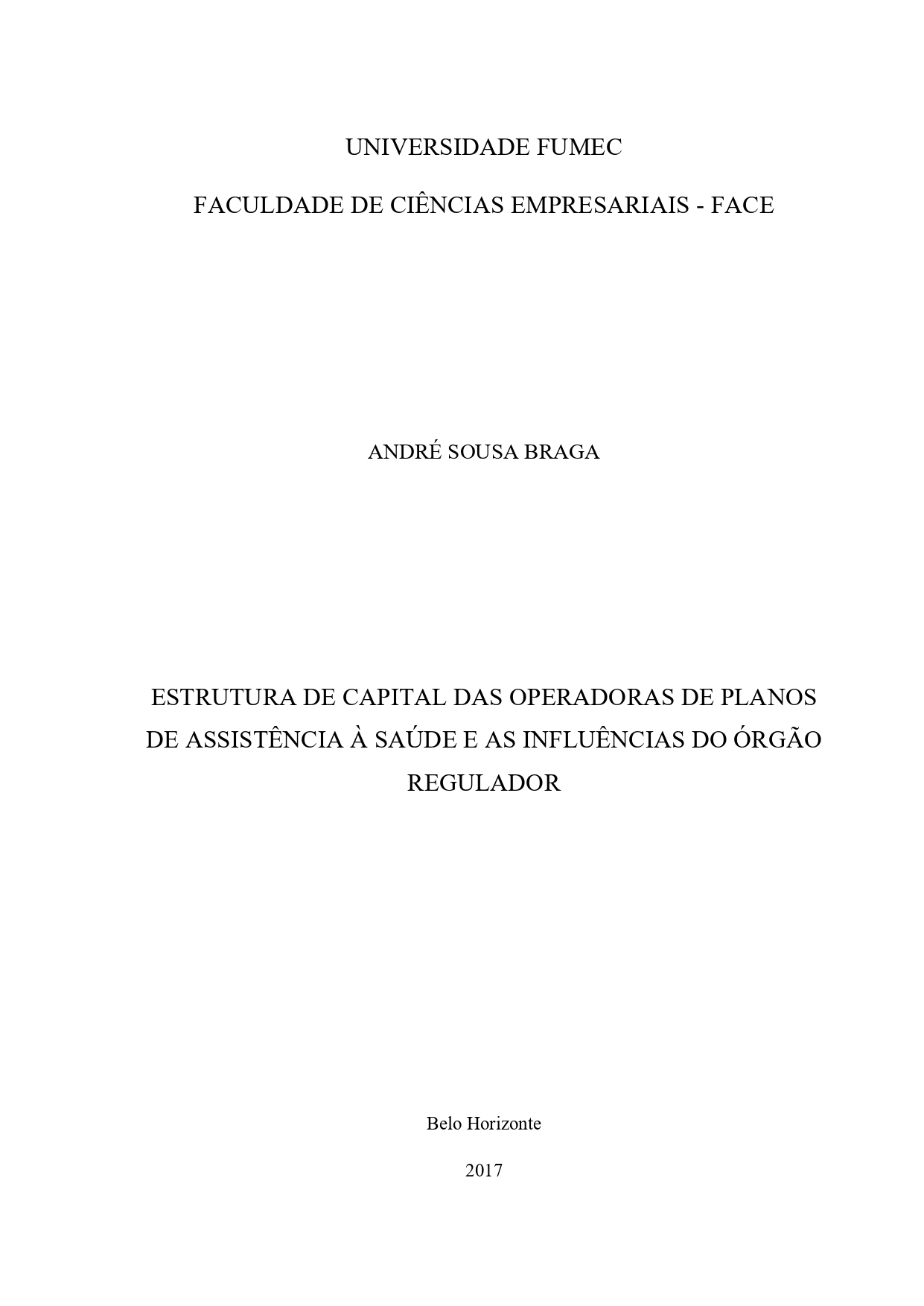Estrutura de capital das operadoras de planos de assistência à saúde e as influências do órgão regulador

Visualizar/
Data
2017Autor
Braga, André Sousa
xmlui.mirage2.itemSummaryView.MetaData
Mostrar registro completoResumo
Com o objetivo de analisar a influência da regulação da Agência Nacional de Saúde Suplementar (ANS) e de fatores estratégicos da firma no perfil da estrutura de capital das Operadoras de Planos de Assistência à Saúde, a presente pesquisa oferece uma contribuição para o crescimento e fortalecimento do campo teórico das finanças corporativas, evidenciando e analisando as premissas teóricas contextualizadas em um mercado regulado. A pesquisa quantitativa e descritiva explicativa utilizou como método de análise a regressão múltipla e o estudo de eventos (Resoluções Normativas [RNs] 206 e 209 em vigência a partir de 2009). Os dados compreendem o período de 2007 a 2012. Após a padronização e normalização dos resíduos nas 739 operadoras em que foram obtidos e apurados os demonstrativos contábeis, restaram 874 casos antes do evento e 1.320 casos após o evento. O modelo apontou relações lineares e quadráticas entre as variáveis dependente e independentes. Como interpretações nos períodos antes e após o evento, observou-se quanto à estrutura de capital que há fortes evidências das influências do evento no ano de 2009 e uma tendência à utilização de capital próprio pelas operadoras. No campo teórico consideraram-se as teorias da pecking order e custos de falência, adequadas para a compreensão do relacionamento das operadoras com o órgão regulador; e quanto aos aspectos estratégicos da firma, observou-se que as influências requerem das operadoras estratégias de financiamento capazes de superar as adversidades do mercado regulado e para tanto necessitam considerar em sua formatação as seguintes particularidades: (i) liquidez e solvência; (ii) investimentos de longo prazo com rentabilidade e segurança; (iii) a necessidade de fortalecimento da capacidade de geração de resultado operacional. Quanto às operadoras de pequeno porte, observou-se que elas são mais vulneráveis às implicações regulatórias. Como conclusão, infere-se que a regulação da ANS restringe a utilização de capital de terceiros na gestão financeira e assim, refletindo no perfil da estrutura de capital das operadoras. The purpose of this research is analysis of the ANS influence in a regulation and the firm's strategic factors on the profile of the capital structure of the Health Providers, therefore, this research contributes to the growth and strengthening of the theoretical field of corporate finance, evidencing and analyzing the theoretical premises contextualized in a regulated market. The quantitative and descriptive explanatory research used as a method of analysis the multiple regression and study of events with event in the year 2009 in the period from 2007 to 2012 so, after the standardization and normalization of the cases, the 739 Health Providers, it was obtained the financial statements, there were 874 terms before the event and 1320 cases after the event. The model pointed out linear and quadratic relations between the dependent and independent variables and as interpretations in the periods before and after the event, was observed the capital structure a strong evidence of the influences of the event in the year of 2009 and a tendency to use shareholders' equity. In the theoretical field the theories of pecking order and bankruptcy costs were considered adequate to understand the relationship of the Health Providers with the ANS; and about the firm's strategic factors, was observed that the influences require the financing strategies to overcome the market adversities of the regulated market and for that, they need to consider in their format the particularities of: (i) liquidity and solvency; (ii) long-term investments with profitability and security; and (iii) need improve the capacity to creation operating results. As for small size Heltah Providers was observed more vulnerable to the regulatory implications. As a conclusion, it should be noted that the ANS regulation considers the use of third-party capital in financial management, reflecting the profile of the capital structure of the Health Providers.
